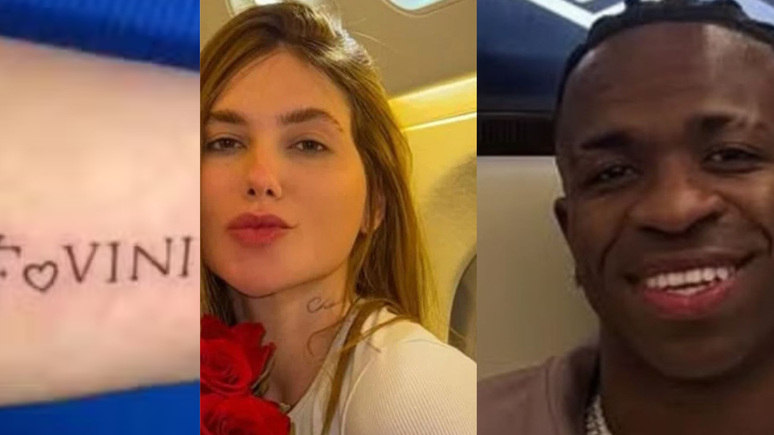PUC-Rio researchers created ChatGeppetto, an open prototype for creating collaborative literary narratives in natural language.
You don’t need to be a literary arts professional to tell stories. With the advancement of Artificial Intelligence (AI) and the development of large-scale language models (LLMs), such as ChatGPT, Gemini, and others, tools have emerged that facilitate the creation of narratives. In fact, large companies in the gaming sector, such as Ubisoft, Blizzard and Niantic, have already begun to incorporate generative artificial intelligence into their production processes, creating increasingly dynamic and complex stories.
Inspired by this revolution, our team, at the IT department of PUC-Rio, decided to expand this idea into a deeper narrative generation process. We connect computational tools to literary concepts and generate ChatGeppetto, an open-use prototype that allows anyone to create natural language narratives in a collaborative, interactive and fun way.
When starting to write fiction, the question may arise: where to begin? Our project believes that an effective way to overcome this block is to seek inspiration from other works you admire. Many professional writers look to the works of other authors for inspiration. For example, the film Batman v Superman: Dawn of Justice (2016) combines the universes of the two iconic heroes, while Seven Men and One (1960) imitates Akira Kurosawa’s Seven Samurai (1954) in the North American Old West.
Another strategy is to expand a short scene from a well-known work into a more detailed narrative. For example, the book Barabbas (1950), by Pär Lagerkvist (1891 – 1974), constructs the biography of the biblical character mentioned only fleetingly in the New Testament. And a fourth possibility is to invert existing narratives, as in The Shape of Water (2017), by Guillermo del Toro (1964-), which transformed the creature in The Creature from the Black Lagoon (1954) from villain to romantic protagonist.
The role of semiotics in narratives
At the heart of these approaches are four key verbs: combine, imitate, expand and reverse. These verbs, which function as operators, are linked to a set of semiotic relations, initiated by the Swiss linguist Ferdinand de Saussure (1857-1913) and subsequently expanded by other researchers. Each relationship corresponds to a specific form of narrative creation:
-Syntagmatic (Connection): allows you to combine elements of different narratives.
-Paradigmatic (Similarity): explores structural or thematic similarities, allowing the creation of similar stories, but in different contexts.
-Meronymics (Detailing): connect stories according to hierarchies. It is possible to expand a specific scene of a narrative into a more detailed plot, or to synthesize an extended narrative into something more concise, as in the evolution of folk tales.
-Antithetical (opposition): reverses values or narrative perspectives.
Semiotic relations are conceptually linked to rhetorical figures known as rhetorical tropes, which are the subject of study by semiotic specialist Daniel Chandler. The four tropes present meanings aligned with semiotic relationships: metonymy (connection), metaphor (similarity), synecdoche (details), irony (opposition). The philosopher and literary theorist Kenneth Burke (1897-1993) classifies them as the main tropes, highlighting their particular relevance. To confirm this idea, Chandler cites in his study the statement of Jonathan Culler (1944-), renowned literary researcher, according to which these tropes constitute “a system, in fact the system, by which the mind conceptually apprehends the world in language”. This suggests that the corresponding semiotic relationships are considered complete enough for practical purposes in narrative writing.
Development of ChatGeppetto
Literary concepts are used by research in computational narratology, which seeks to implement practical solutions through guidelines to guide the structures of machine-generated texts. In our prototype, we specifically draw on semiotic relationships to generate new narratives from existing works, maintaining a sense of innovation and narrative cohesion. In this way, we favor results with a more natural fluidity.
Our project is led by a team composed of researchers Edirlei Soares de Lima, who completed her doctorate at PUC-Rio and now belongs to the University of Applied Sciences in Breda, the Netherlands, and professors from PUC-Rio Bruno Feijó, Marco Antonio Casanova and Me. Our results have been published in numerous conferences and scientific journals.
As one of our goals, we have invested in creating standards for narrative genres, such as comedy, tragedy, satire, epic romance, and mystery. We created templates to identify similarities between examples of each genre and incorporated these templates into guidelines to ensure thematic coherence in machine-generated texts. Additionally, we have developed features that allow users to interact with the narrative, influencing subsequent events.
One of the challenges we encountered was generating illustrative images. Initially, the images generated by the Stable Diffusion tool often distorted the narrative elements, which we tried to overcome in the current version of the prototype. And, in addition to the maintenance and improvement work on ChatGeppetto, we have developed two other prototypes, PatternTeller, which allows you to structure stories according to the conventions of the chosen literary genre, and ImageTeller, which generates stories starting from the images provided as input.
Try to find out
ChatGeppetto is available for free to anyone who wants to explore combinations of works, subvert classics or create new perspectives. Your stories are private, so only you will have access to what you create. Although the tool currently only works in English, as it is the recent result of our scientific research conducted in that language, it can also be used as an educational resource to improve proficiency in that language and develop literary skills in English.
To compose a narrative, the user provides the title of one or more works of his choice, chooses a semiotic relationship (combines, imitates, expands or reverses) and can add short descriptions about the desired scene or protagonist.
An example of a story generated by our tool can be seen in Holmes & Hobbit: The Intersection of Worlds, which combines the films Sherlock Holmes (2009) and The Hobbit: An Unexpected Journey (2012). In this narrative, the protagonist Sherlock Holmes joins his assistant Bilbo Baggins in a new adventure. The result can be displayed in text with oral narration or in script format (storyboard).
It is worth emphasizing that the response format is simple and is not intended to replace human creativity. At best, the generated scripts are interesting suggestions that can help talented people explore alternatives to begin their actual composing process. I personally believe that the originality and richness of the human imagination will always be one step ahead of the programmed competence of artificial creatures. In other words: I see no reason to fear the ominous future – with positronic robots taking over – announced by Isaac Asimov, with his very human creative verve.
Antonio L. Furtado in his publications thanks to the support of CNPq and FINEP and his only affiliation is that of professor emeritus of the Department of Computer Science of the Pontifical Catholic University of Rio de Janeiro
Source: Terra
Rose James is a Gossipify movie and series reviewer known for her in-depth analysis and unique perspective on the latest releases. With a background in film studies, she provides engaging and informative reviews, and keeps readers up to date with industry trends and emerging talents.







